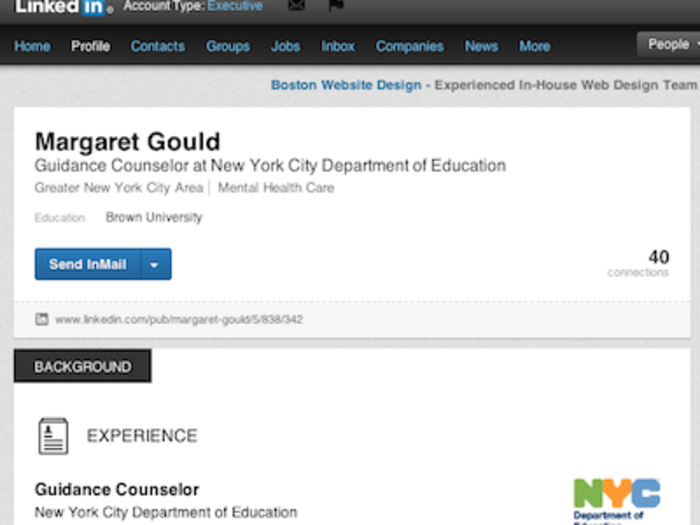The Incredible Life Of Jay Gould: The Original Boogeyman Of Wall Street
Gould was born to a working-class farmer near New York's Catskill mountains.

Gould got a taste for profiting off land early.
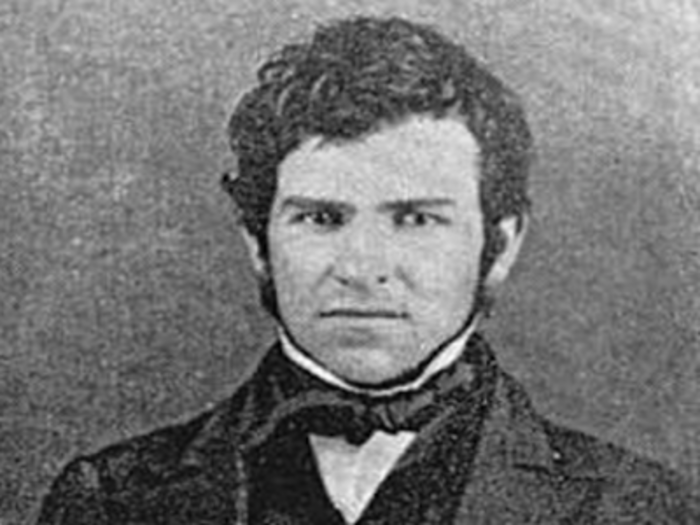
He worked for local merchants as a surveyor, then as a tanner. By age 20, he and his partner employed 250 men.
Source: Life of Jay Gould
He moved to the city as soon as he could.
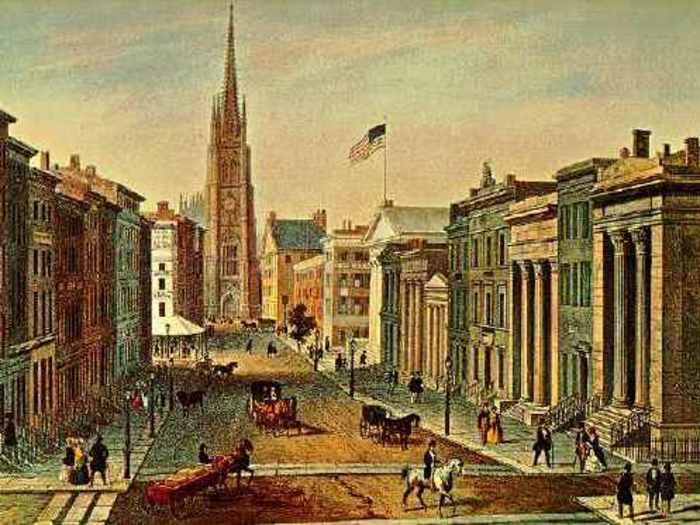
At age 23 he moved to New York to become a Wall Street broker.
Source: Life of Jay Gould
It was here he flipped his first railroad, the Rutland & Washington.
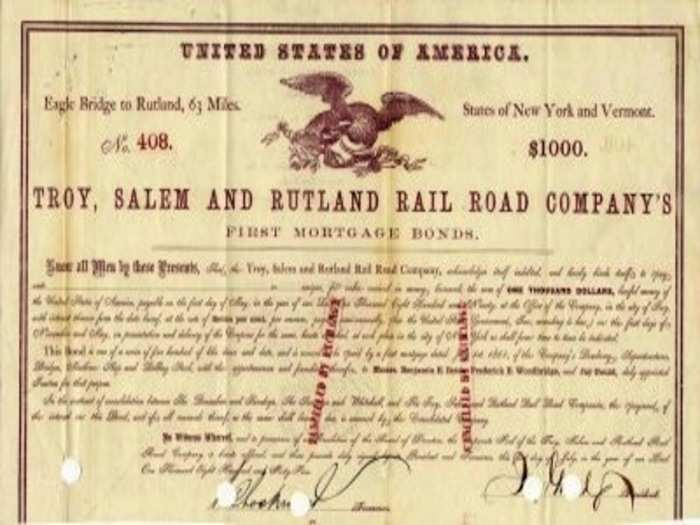
The company's stock had plunged in the panic of 1857. Gould purchased most of the outstanding shares, turned the companies fortunes around by diligently repairing the line, and sold it for an outstanding profit.
Source: Life of Jay Gould
With that deal, Gould achieved prosperity "but not unrivaled wealth." That was not good enough.
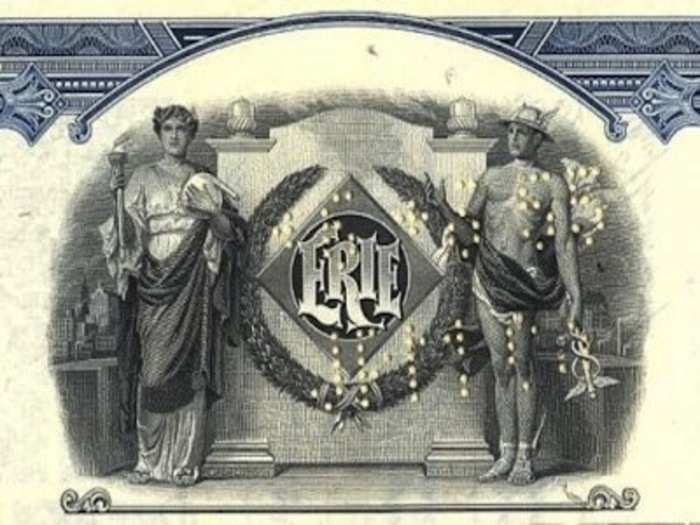
He now trained his sights on one of the biggest "roads" in the game, the Erie.
Source: Life of Jay Gould
He went after the Erie RXR, which had already been a target of some of the shrewdest investors of the day.

One of them was Daniel Drew. He'd shorted Erie stock so that when the panic of 1857 came and made an instant fortune.
Source: Life of Jay Gould
At the same time, Cornelius Vanderbilt had also decided he wanted to expand his railroad empire.
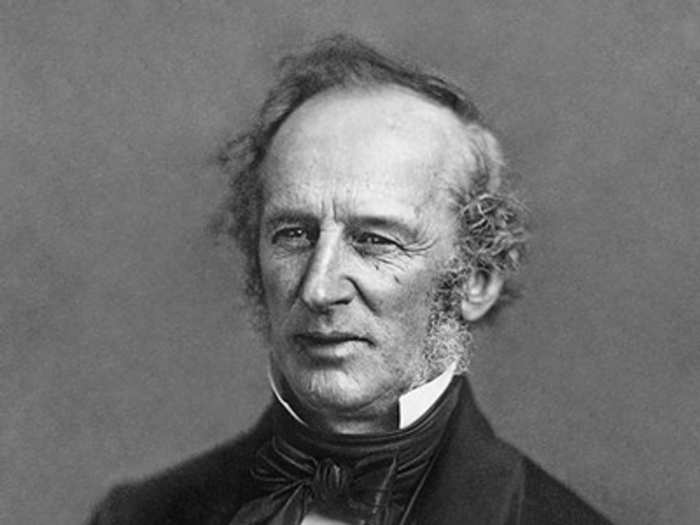
He wanted a piece of the Erie too.
Source: Life of Jay Gould
So Gould was barking up a pretty tall tree. But he had an ally: Jim Fisk.
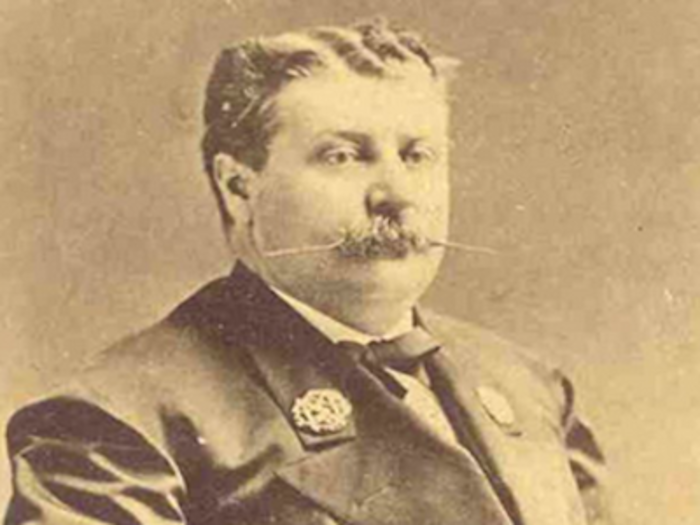
Though physically and temperamentally Gould's opposite, Fisk had made his fortunate in largely the same way, scheming their way on Wall Street.
Source: Life of Jay Gould
Fisk, in turn, had connections with Drew, and the three formed an entente to muscle out Vanderbilt.

The Erie War, as historians came to call it, had begun. The trio ran their operation from Jersey City, just across the Hudson.
This was actually by necessity — the Erie Ring, as they had become known, had illegally flooded the market with 50,000 shares of Erie stock and had to go on the lam after Judge George G. Barnard issued an arrest warrant for their arrest for violating an injunction.
Source: Life of Jay Gould
But a mere *days* after moving to Jersey City, Drew decided to surrender.

He withdrew his investment from the campaign.
Source: Life of Jay Gould
But Fisk and Gould weren't about to allow themselves to get...railroaded.
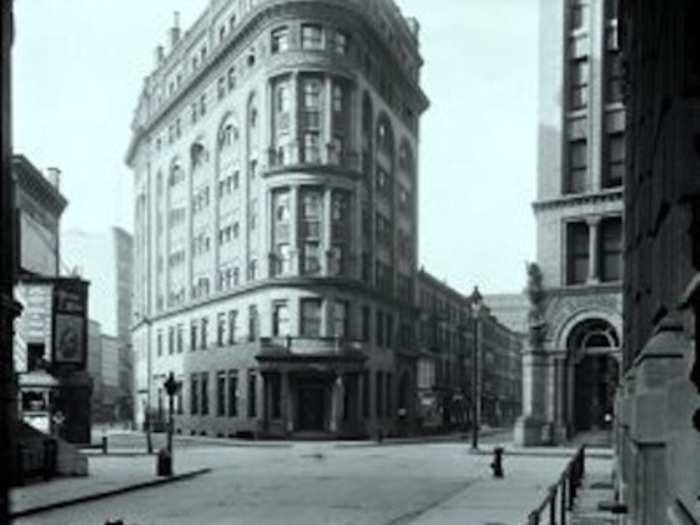
Legend has it they fueled their campaign by shipping steak to Jersey from Delmonico's.
Source: Life of Jay Gould
Their next trick would earn Gould his reputation as a legendary shark.
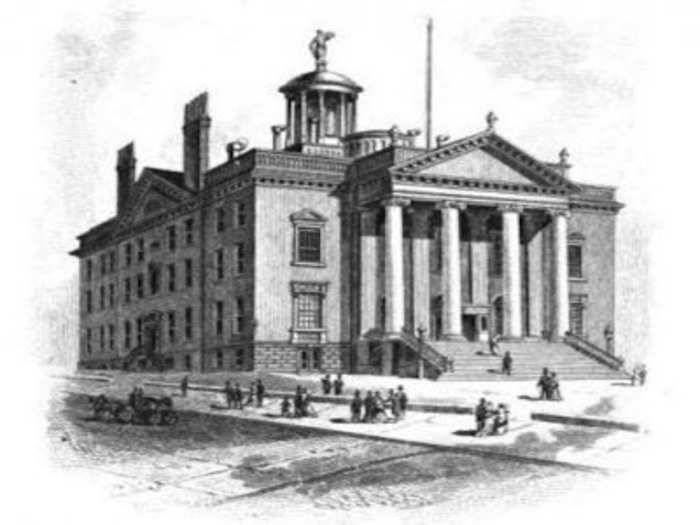
He relocated to Albany to begin bribing state officials to pass a law making the illegal stock float legal.
Source: Life of Jay Gould
There was really only one guy he needed to go after though: Boss Tweed.

Tweed, the head of the Tammany Hall Democratic political machine and a state senator, received stock, cash payments, and a seat on the Erie Railroad board of directors, and in return got the legislation passed.
Source: Life of Jay Gould
With Tweed's help, Gould was able to get to Judge Barnard.
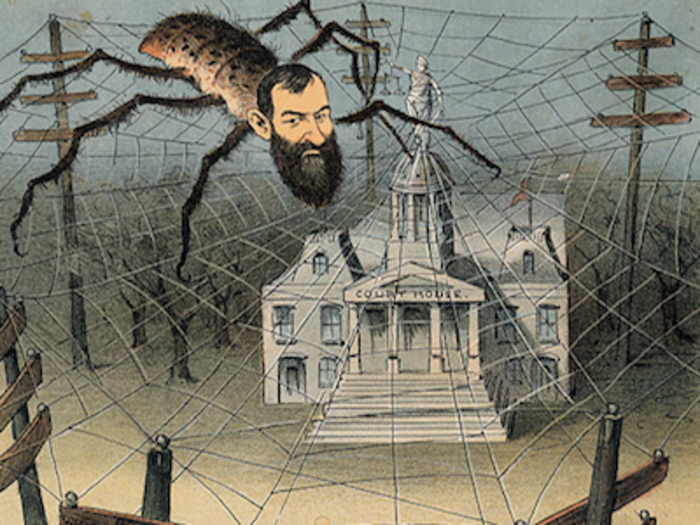
Barnard agreed to ease up on judgments against the Erie. Here was the cartoon legendary illustrator Puck came up with.
Source: Life of Jay Gould
Fisk and Gould also brought market pressure to bear. By one account, in order to increase traffic on the Erie, they sought to drive up the price of gold.
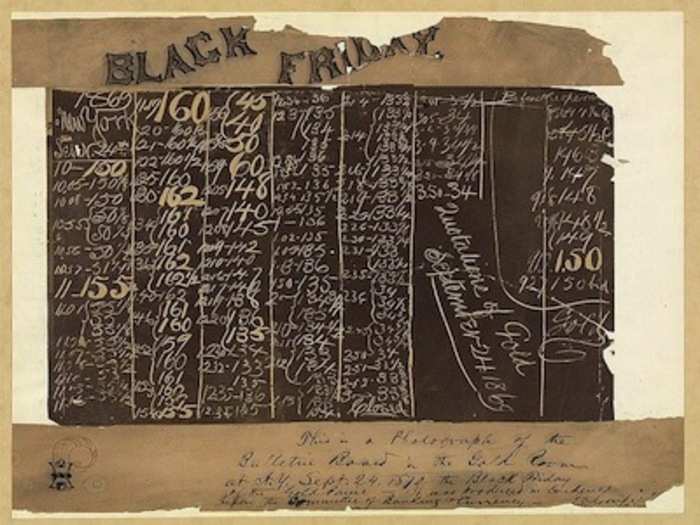
Gould's speculation caused an economic panic on September 24, 1869, that became known as Black Friday.
Source: Tucker, Encyclopedia
The plan ended up backfiring on Gould, and ended up implicating President Grant.
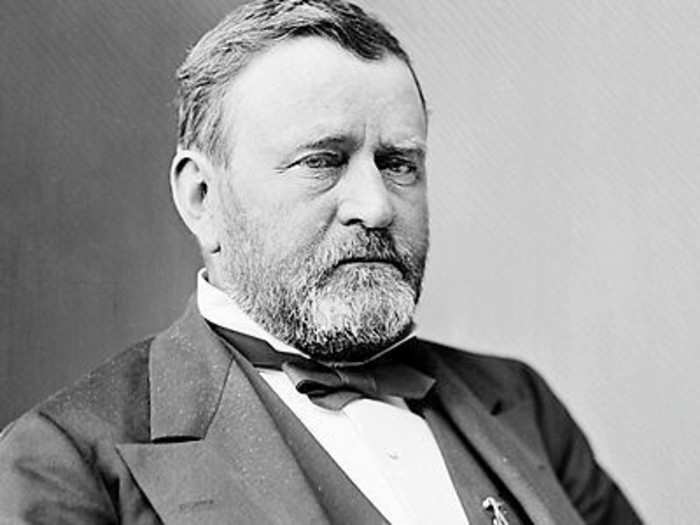
Grant's sister had married a man named Abel Corbin. Gould recruited Corbin to be a kind of Grant whisperer.
Corbin then successfully convinced the President to hire General Daniel Butterfield as assistant secretary. Butterfield had agreed to tip Gould off when the government was ready to sell gold.
Source: PBS
Meanwhile, legal battles over Erie continued, and eventually the Erie Ring was broken up.
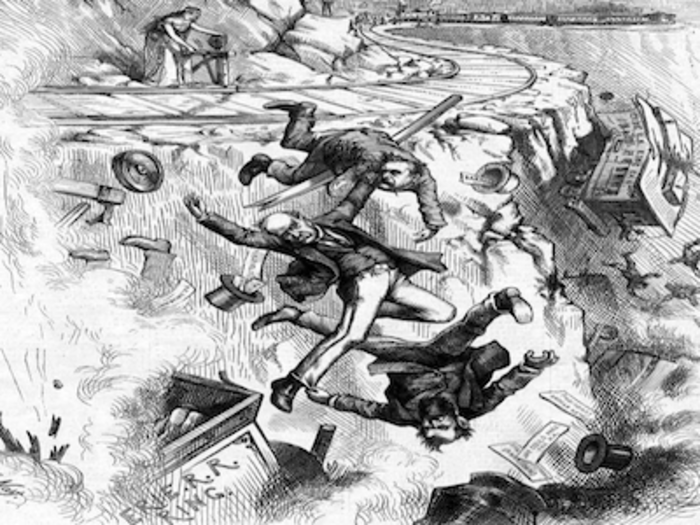
Gould resigned as director of the railroad in March, 1872.
Source: Life of Jay Gould
After all this, Gould proved irrepressible.
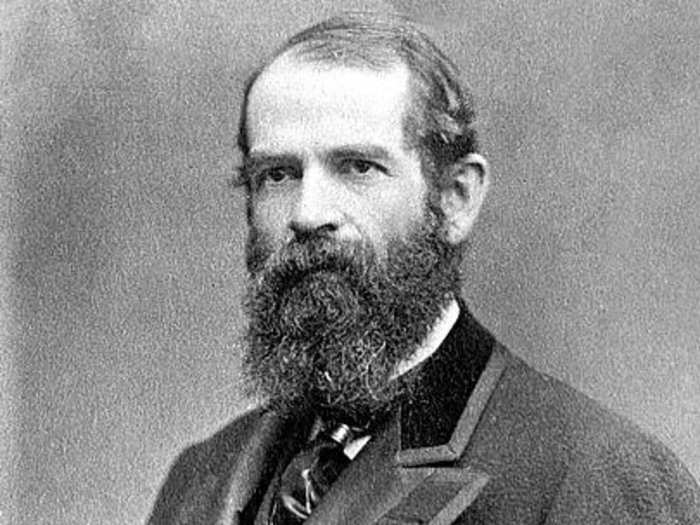
He decided to cash in on his reputation as the most fearsome man on Wall Street.
Source: Life of Jay Gould
He went on to acquire even more railroads, most famously the Union Pacific, which is still with us today.

The company's own website struggles with Gould's legacy, ultimately deciding he probably saved the firm:
He also practiced pitting one railroad against another, forcing the UP into consolidations, most famously the merger with the Kansas Pacific. Although consolidation was blamed for the UP's financial difficulties, it actually may have worked to the company's advantage. For better or worse, Jay Gould may have been ahead of his time. Buying rival lines as an act of self-defense would become standard practice among railroads by the 1880s.
Source: Union Pacific
And he built up New York City's elevated rail lines.
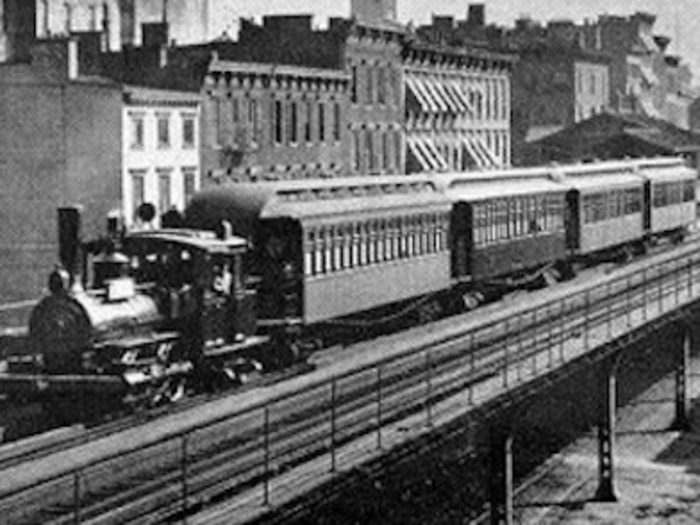
They allowed it to become the capital of the universe.
Source: Life of Jay Gould
Gould died in 1892. Many were relieved.
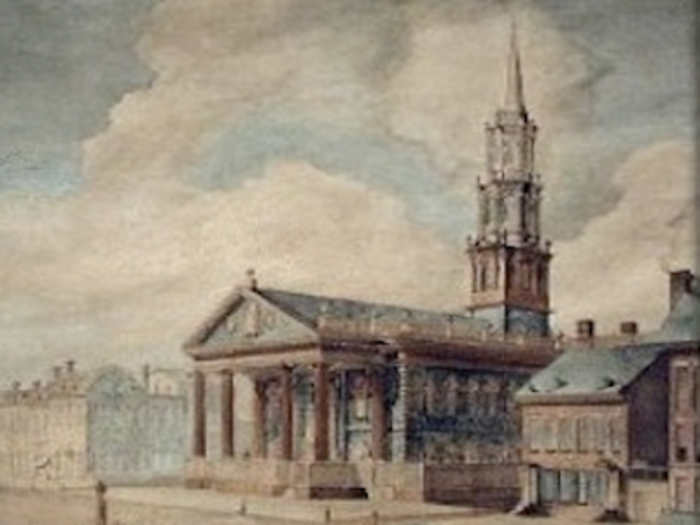
The pastor of St. Paul's called him "the human incarnation of avarice — a thief in the the night stalking his fellow man."
Source: Life of Jay Gould
Others were somewhat more charitable.
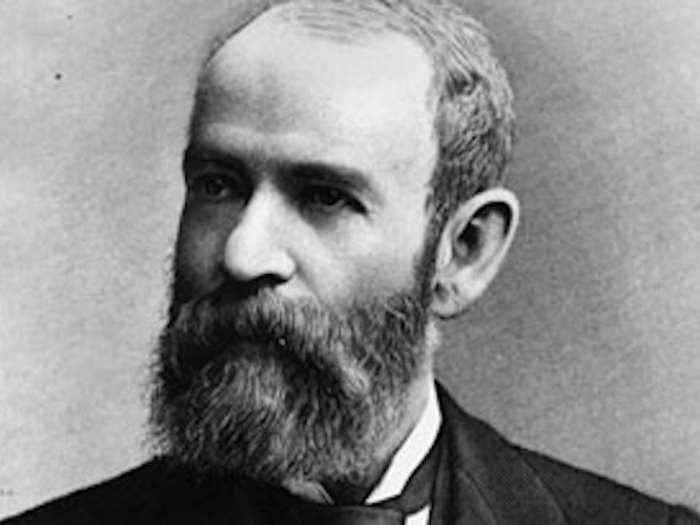
The New York Reader editorialized, "It will have to be conceded, no doubt, that his character, as a whole, was not one to be held up for emulation and imitation to the youth of America. There were not enough of human sympathy and philanthropic impulse in it for that. Nevertheless there were strong lines of purpose and faculty in the intellectual make-up of Jay Gould which give him rank among really great men."
Source: Life of Jay Gould
Today, Gould's heirs are still around. Gordon Gould runs a Vitamin distributor.
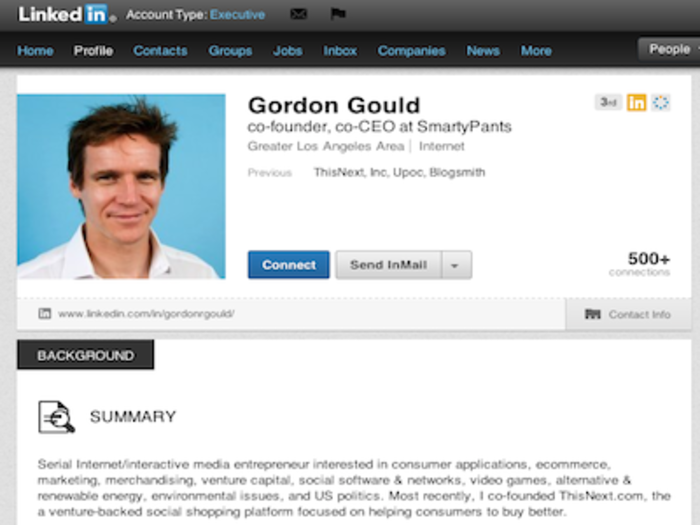
Source: New York Times
Popular Right Now
Popular Keywords
Advertisement
